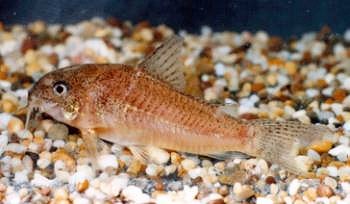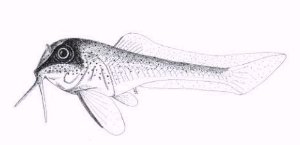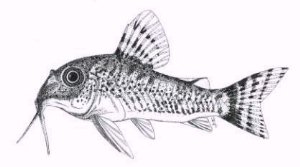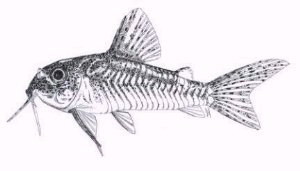SCOTCAT.COM
your internet guide to all things catfish
| Corydoras cf. sanchesi Nijssen & Isbrücker, 1967 |
by Ian Fuller |
Corydoras cf. sanchesi
Conditions: Spawning: During this locked position, both fish would quiver for a few seconds. Between 3 and 7 light orange coloured eggs would be deposited into the females ventral fin pouch. The pair would then part, with the male wandering off rummaging in the gravel for food, and the female just leaning on one pectoral fin resting. She would rest for anything up to ten minutes before scurrying off looking for a suitable place to place her eggs. Most of the eggs were deposited in the Java Moss, with just one or two stuck to the tank sides and a couple on the side of the filter. Based on the first spawning the eggs will take four days to hatch, and the fry are large enough to take newly hatched brine shrimp three days after hatching. Further foods will be micro worm and powdered flake, followed by larger offerings of grindal worms and sifted Daphnia, as the fry get larger. When the fry get to around 12mm whole tablet food will also be given. The fry swarm all over these tablets when they are offered. It’s a magic sight to see dozens of fry gathered all around and feeding so avidly. Small water changes are made every day once the fry are feeding, with particular care being taken to use water of exactly the same temperature. If the temperature differs by more than a degree it can wipe out a complete brood. These water changes are essential if the fry are to develop to their full potential.
Fry at 7 days
Juvenile at 1 month
10 weeks Photo and Drawings are by the Author
|
If you would like to contribute an article, please e-mail me. You will of course be credited for your work.
If you would like to donate any denomination of money to the site just click the above link button. All proceeds will go to running the site and hopefully to keep it going for a few years yet.
Print or e-mail this factsheet below





